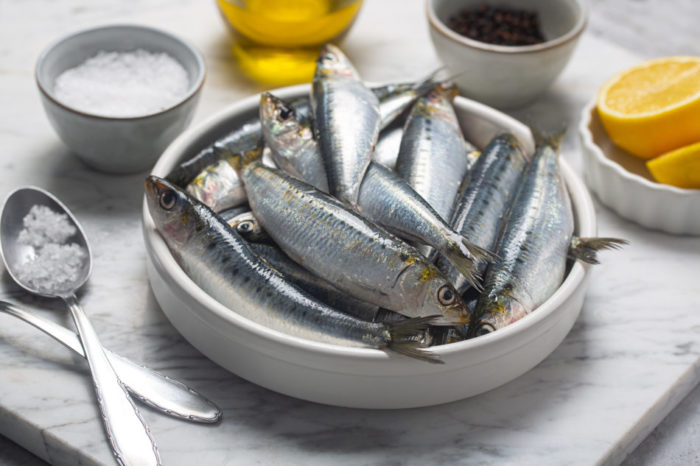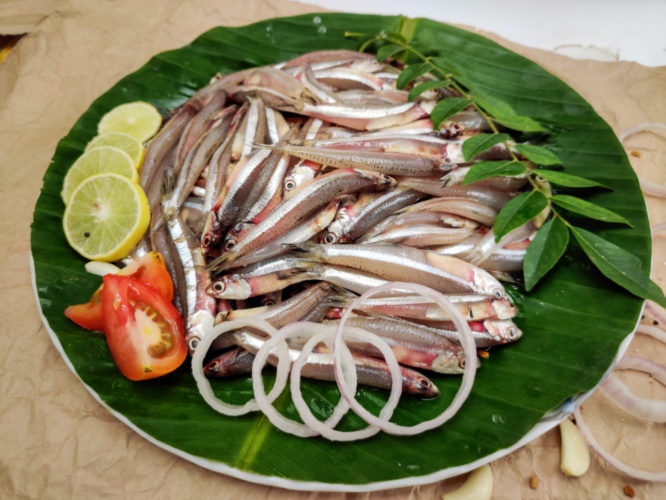Anchovies and sardines are both small fish, usually sold in cans. Their appearance is quite similar, which often leads to people confusing between these two very different fish. Let’s have a better look at anchovies vs sardines to see some key points and get a better understanding of what these fish are.
These small-sized fish often find culinary uses. Due to their similarity in size, shape, and color, they often feel similar. Besides, both these species are abundant in the Mediterranean Sea, thus having a marked effect on the cuisine there.
Although, to be clear, they are found in several parts of the world and are part of several cuisines. However, their popularity with North African and European cuisine often gets more attention.
So, let’s see how these fishes measure up against each other.
Differences Between Anchovies And Sardines
In our discussion here, we already have a good idea of what differentiates anchovies from sardines. Yet, here are some quick points to bring the distinction home and clear the idea of what makes these fish different.
- Sardines measure 6-12 inches and are usually longer than anchovies, which measure 4-10 inches.
- Anchovies are saltier and have a stronger fishy taste. Sardines are salty and have a fishy taste too, but they’re less intense than anchovies.
- Sardines have a thick flesh, which separates their use in filets and similar cookin styles from anchovies.
- Sardines have a silver color. Anchovies are blue/green with a silver underside.
What Are Sardines?

Sardines are a variety of small, saltwater fish that are found across the world’s oceans. The fish have a silver color and usually range from 6 to 12 inches in size. Delving further into its appearance, the fish is oily, doesn’t have scales on its head, shows a small dorsal fin, and no sideline.
They like to travel in dense schools, feeding on plankton, and usually hang near the shore. The fish have a salty taste and a noticeable fishy flavor. Canned sardines are often packed with water or oil to extend their shelf life.
Sardines are a healthy source of fats, including omega-3 fatty acids. Other nutrients they provide are choline, Vitamin B12, Vitamin E, phosphorus, calcium, potassium, a few more.
The fish is an excellent and nutritious meal, though the high sodium content is a problem.
It’s worth noting that canning significantly increases the sodium content of these fish. While they are naturally low in sodium, the processing and canning adds a fair bit of salt. If you’re looking for a low-sodium option, you can remove some salt from these fish by rinsing them off with water. Follow this by soaking them in water for a few hours to remove salt.
Other methods to reduce sodium-content include soaking the fish in milk and white bread and coating them in layers of starch (cooked white rice).
What Are Anchovies?

A lot of people get confused between anchovies and sardines because they share a somewhat similar look. However, if you know a few points to look for, the difference between anchovies and sardines is visual and easily observed.
Anchovies too are small, oily fish, usually smaller than sardines and measure about 4-10 inches. Anchovies have a green and blue back, though the underside is silver.
The muted blue/green and the presence of the silver color is one of the reasons why this fish gets confused with sardines. Interestingly, it’s also a way to easily differentiate one of these fish from the other.
Much like sardines, anchovies too hang out in dense schools and usually spend their time near the shore.
However, the flavor they have is more intense as compared to sardines. Anchovies are more intense, saltier, and have an umami factor that makes their use common in several recipes and sauces. They have a strong fishy flavor, which makes them a good choice for fish sauces. Another popular condiment that uses anchovies is Worcestershire sauce.
Much like sardines, anchovies are naturally low in sodium. However, the processing and canning makes these fishes very salty before they hit the store shelves. Generally speaking, store-bought anchovies will be saltier than sardines.
Anchovies are cured in salt water before being canned. This, along with the canning process, significantly increases the sodium content of the fish.
Concerns for sodium aside, anchovies are actually loaded with important vitamins and nutrients. They’re an excellent source of proteins, omega-3 fatty acids, iron, and zinc.
Key Distinctions And Questions For Sardines vs Anchovies
Can I Substitute Sardines For Anchovies In Cooking?
Given their similar shape, size, and structure, one would assume that sardines can substitute anchovies in many recipes. Alternatively, we could perhaps use anchovies in place of sardines.
In reality, it’s not a good idea to substitute anchovies for sardines or vice versa. While they have some similarities in looks, both fishes differ greatly in taste and texture. Anchovies have a saltier and fishier taste with an intense flavor.
Sardines on the other hand, are much milder. Additionally, sardines have a thick flesh, which doesn’t really work well for fish sauces and filets, both of which go fabulously with anchovies.
The Bottom Line
Common, popular, and versatile for cooking as these fish are, they also share remarkable properties. Yet, as we notice details in this anchovies vs sardines comparison, big points of note make themselves apparent. While these fish appear similar, their culinary use is quite different. Plus, there’s a general difference in their physical properties as well as their use in food.